TravelMag set out to find the most charming towns and small cities in Arizona. Our survey results reveal the best places to get a taste of the American Southwest in bite-size, yet memorable doses.
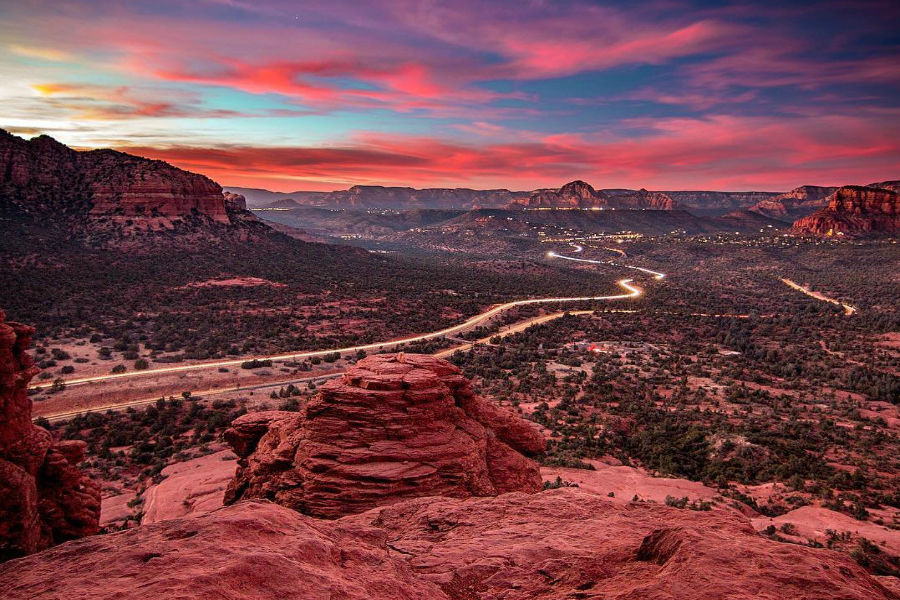
A stunning sunset in Red Rock Country, Arizona (Sedona Chamber of Commerce & Tourism Bureau)
The last of the 48 coterminous states to join the U.S., Arizona is known for its dramatic landscapes. With its hot, dry deserts, verdant valleys and steep mountain ranges, the southwestern, landlocked state can clock in some of the highest and lowest temperatures in the country in a single day.
Natural wonders like the mile-deep Grand Canyon, carved by the famed Colorado River, the ancient Petrified Forest and Painted Desert, and the stalactite-filled Kartchner Caverns offer majestic views and ecological insight. Historical landmarks include former mining towns; some restored, some transformed and some left behind as ghost towns. Ancient pueblo ruins permeate the landscape, reflecting the land’s Native American and Mexican roots.
While the twinkling lights of bigger cities like Phoenix, Scottsdale and Tucson may be tempting destinations, Arizona is home to many a small wonder as well. To uncover these oft lesser-known gems, TravelMag asked more than 100 locals, visitors, travel gurus and writers to name their top three most charming towns and small cities in Arizona, with populations of less than 100,000 people.
Below, in alphabetical order, we share the top ten towns and small cities in Arizona, along with what makes each place so endearing. Be they former mining towns, artsy enclaves or forest and desert hideaways, each little locale on this list merits reverence. Use this guide for a road trip that will surely leave you charmed.
Bisbee
Amid the mineral-rich Mule Mountains, Bisbee is one of Arizona’s many former mining towns that lured late-19th century prospectors and miners across the country in hopes of striking it rich. The “Queen of Copper Camps” (also found to hold gold, silver, lead, turquoise and zinc) quickly became one of the most happening cities between the coasts. Like many mining camps, the cultured town was known for its happening saloon and brothel scene, but it was also home to one of the country’s first baseball fields and the state’s first community library, two of many historic sites that survived the town’s transition away from mining (in the 1970s) into an arts and culture hub. While you can still don a construction helmet and tour the Queen Mine, if it’s a sense of small-town charm you’re after, book a cozy stay at one of many B&Bs, chat with members of this tight-knit community at the weekly farmer’s market, and enjoy chain-free shopping at local shops, art galleries and book stores. Join the celebration of local talent while perusing the monthly art walk or listening to a live band.
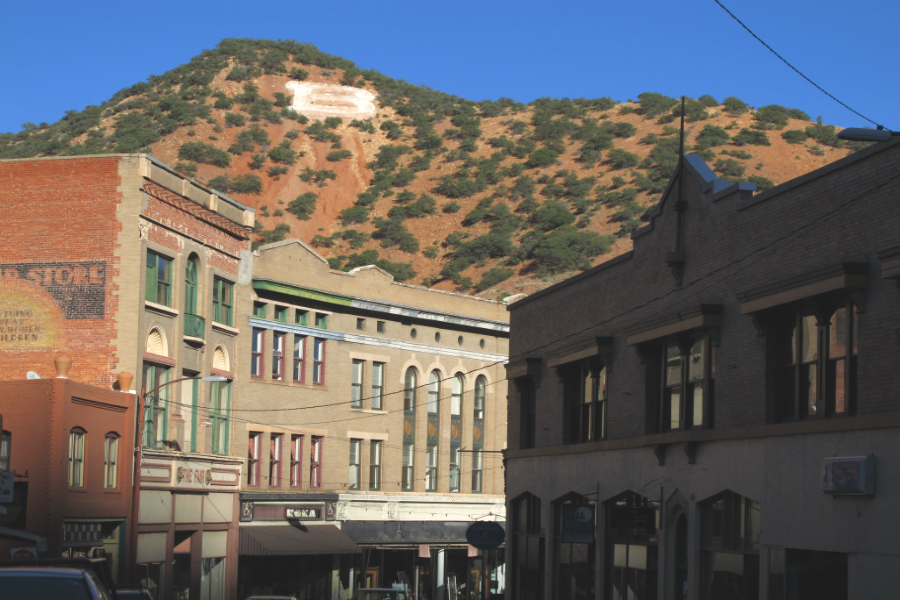
The historic Main Street in Bisbee (Photo: Chuck Feil)
Cottonwood
Dry desert may come to mind when conjuring images of Arizona. Part of Cottonwood’s appeal, however, is its moderate year-round climate, thanks to its location in the Verde Valley (one of Lonely Planet’s top ten U.S. travel destinations). Offering much more than a chance to avoid the desert heat down south and the high country chill up north, Old Town Cottonwood offers an escape from the big city (Phoenix is a 90-minute drive away) into that sense of knowing and being known that only smaller communities can provide. Wander along the historic Main Street, popping into antique shops, galleries and local eateries. While imbibing at this prohibition-era bootlegging haven was once risky, now you can casually sip wine from the surrounding Verde Valley Wine Country at over a dozen tasting rooms. Outdoor enthusiasts can explore the seemingly ironic beauty of Dead Horse Ranch State Park nearby, along the Verde River. Side trip tip: a 20-minute drive from Cottonwood, the Sinagua cliff dwellings at Montezuma Castle National Monument – a complex network of multi-story, multi-room living quarters carved into a limestone cliff – offers a rare glimpse into ancient Native American “small town” civilization.
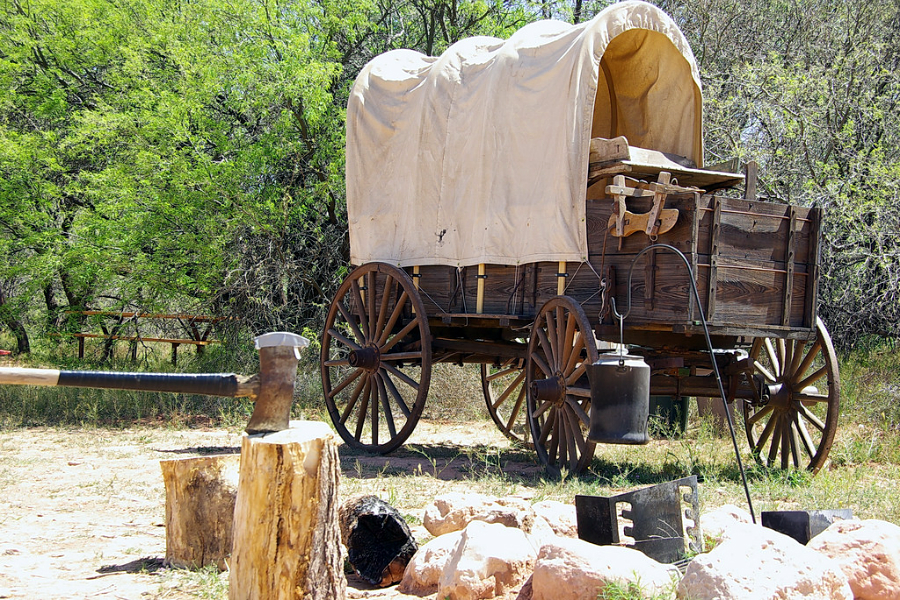
The frontier past at the Dead Horse Ranch State Park in Cottonwood (Photo: Al_HikesAZ via Flickr)
Flagstaff
Heading north, the mountain town of Flagstaff, known for both its easy access (at the crossroads of two major interstates—17 and 40), scenic beauty and, of course, small-town charm, particularly in the historic downtown area. Perched at 7,000 feet, surrounded by the world’s largest contiguous Ponderosa pine forest, this gateway to the Grand Canyon offers four seasons of outdoor adventure, from hiking and mountain biking to rock climbing and camping. Warm summers lead into a dazzling flash of fall colors, soon covered by plentiful snowfall; winter-long highs of over 100 inches beckon snowbirds to come play and linger into the blossom-filled spring. To top off picturesque views earned during your outdoor adventures, visit the Lowell Observatory, where Pluto was first discovered, and where you too can peer into the great beyond. In town, refuel at cafes and restaurants keen on showing off the best of locally-sourced fare and see for yourself why the area has become known for its locally crafted brews. For a taste of history, drive along the Mother Road, stopping at quirky Route 66 attractions along the way. Nearby natural and Native American wonders include Glen Canyon de Chelly National Monument, where you can book back-country tours with a Navajo guide.
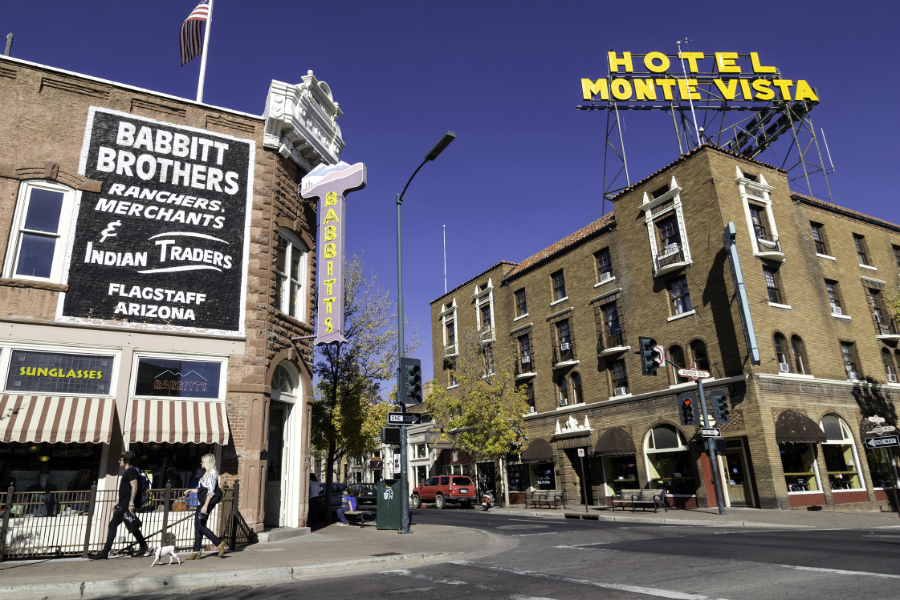
Flagstaff’s historic downtown (Photo: Flagstaff Convention & Visitors Bureau)
Globe
Another charmer rich in outdoor recreation is this frontier town located within Tonto National Forest. The state’s largest forest is home to dramatic vistas and diverse terrain, with Saguaro-cacti spotting the Sonoran Desert and pine forests cloaking its mountain peaks. The famed 80-mile journey from Phoenix to Globe alone makes it all the more enticing to hop in the car, particularly the stretch of Gila-Pinal Scenic Road. In small-town style, slow down to take in the photogenic rock formations, a state hallmark. Another tempting route, if heading in from or out toward the west, is the Apache Trail (State Route 88), named after the ancient pathway the Native American tribe used to traverse the Superstition Mountains. The ancient Salado village of Besh-Ba-Gowa is another highlight whose partially restored pueblo ruins and artifact-filled museum immerse visitors in the area’s ancient Native American roots. The tiny, historic town itself still reflects its history as an isolated, at times prosperous, mining camp, rife with Wild West mischief and conflicts with indigenous local tribes, like the Apache, who’d lived in the region for centuries. While wandering the historic district, don’t miss the Pickle Barrel Trading Post, packed wall-to-wall, floor-to-ceiling with Old West collectibles, Native American crafts, jewelry, antiques and more.
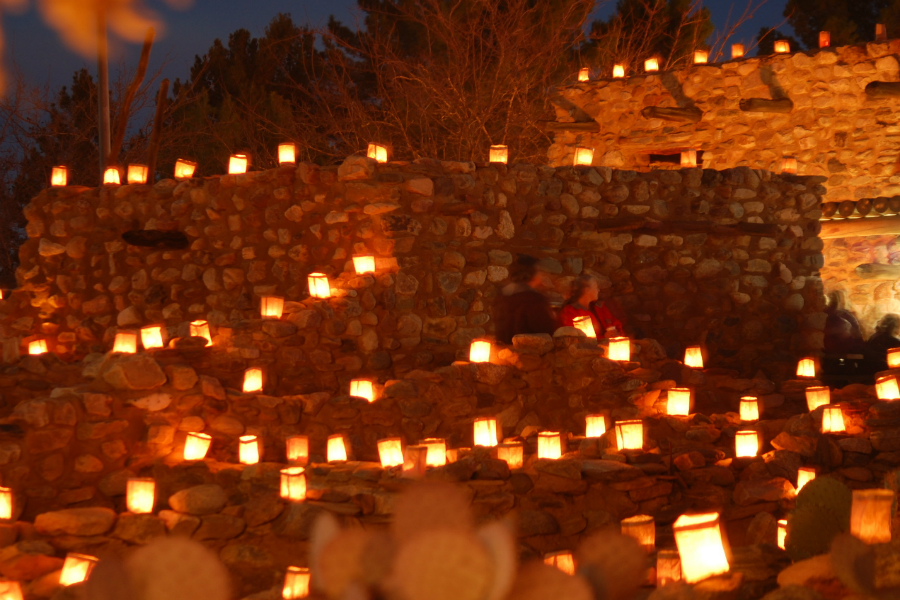
The Festival of Lights at the Besh-Ba-Gowah ancient ruins (Photo: Globe-Miami Chamber)
Jerome
Built atop Cleopatra Hill, about 10 miles east of Cottonwood, is one of the best towns to visit for a combination of small-town charm and incredible views. Jerome is yet another mining town that rose from the dust of abandonment to become a historic treasure, salvaged by preservationists and artists. (Side trip tip: Between Cottonwood and Jerome, atop another hill, is Tuzigoot National Monument, the stone ruins of a pueblo built by the Sinagua people in 1100 A.D.) Jerome’s historic buildings, artsy vibe, and gorgeous views of the Verde Valley below, make its former nickname as the “wickedest town in the West” seem laughable. Gone are the bawdy brothels and rowdy saloons (those that remain have matured from their Wild West beginnings), replaced by B&Bs, art galleries and wine tasting rooms. For a tiny town of only 450 people, Jerome has made a name for itself as both the largest ghost town and also the home of one of the top 25 Coolest Film Festivals in the world, according to Movie Maker Magazine. The four-day Jerome Indie Film Festival is held in September and promises a Woodstock-vibe, with movies and wine.
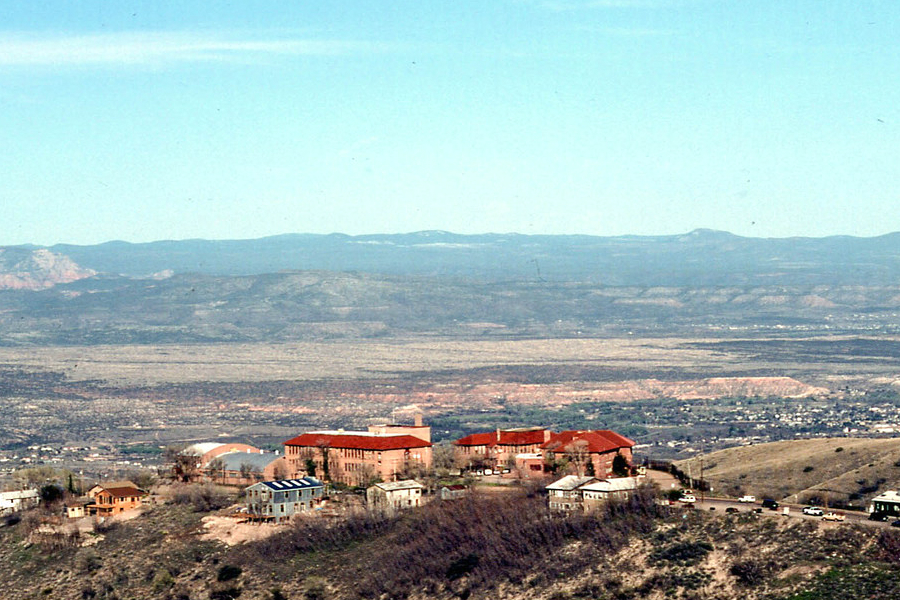
Jerome, one of the best towns to visit in Arizona for a bit of nostalgia (Photo: David Wilson via Flickr)
Prescott
Hugged by pine forests at a cooling elevation of over 5,000 feet above sea level, Prescott offers a mix of outdoor adventure and historic charm. With its 1.25 million acres of National Forest, three lakes, and a bounty of parks and trails, it’s no wonder why Expedia hailed the former territorial capital the Best Arizona Destination for Nature Lovers. Unlike Arizona’s many scorching desert towns, Prescott’s mild temperature average of 70 degrees Fahrenheit makes you actually want to be outside, whether golfing, hiking, kayaking, rock climbing, horseback riding, camping or cruising the historic downtown. Get a taste of the area’s founding Gold Rush and cowboy culture in Whiskey Row, aptly named for its many saloons (a total of 40 at one point). Now, shops, galleries and eateries intermingle with historic and up-and-coming whiskey holes. Another chance to experience cowboy culture is the annual Fourth of July Prescott Rodeo, the world’s oldest rodeo, founded in 1888. Come Christmas, Prescott’s charm reaches its peak. Bedazzling with its lights, “Arizona’s Christmas City” hosts a crowd-drawing Christmas parade and celebratory lighting of the neo-classical county courthouse. Bundle-up, sip cocoa and give into the child-like sense of wonder the season inspires.
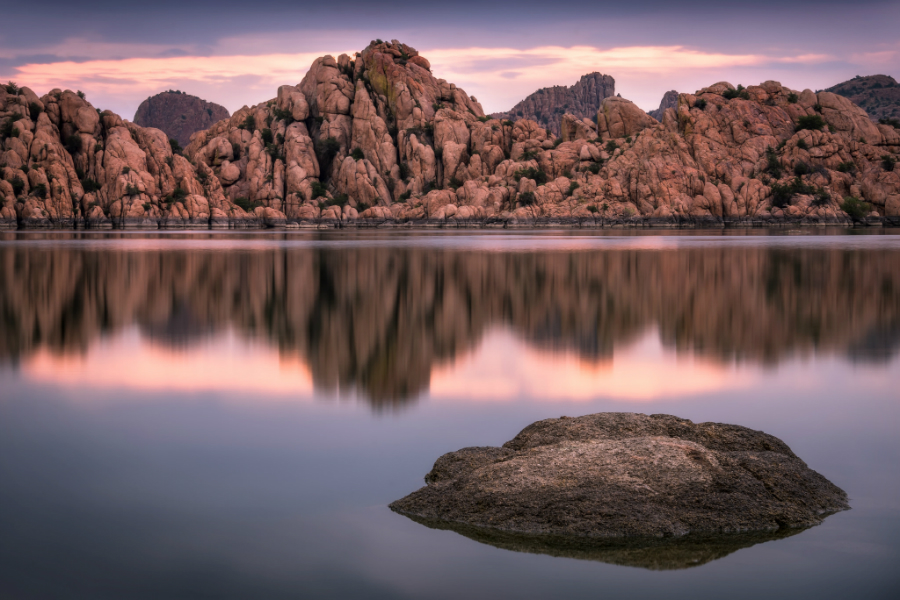
A mesmerizing sunrise at Watson Lake in Prescott (Photo: Michael Wilson via Flickr)
Sedona
Though likely the most-known town on the list, Sedona still gives the sense of getting away from it all: one of many reasons travelers flock here. Whether you explore the high desert floor’s hundreds-of-miles of trails, surrounded by the jaw-dropping formations for which “Red Rock Country” is adored, or hide away at a luxury spa, you’ll likely leave agreeing with USA Weekend’s decision to list Sedona as one of the “Most Beautiful Places in America.” Beyond nature’s glory, be inspired by the unique works displayed at over 80 galleries and shops in town, easily accessible on foot (the annual Sedona Arts Festival is held in October). If you’re craving something even more transformative, residents of Sedona are not shy when it comes to healing and soul-cleansing practices. This mecca for spiritual renewal offers everything from massage and yoga to hypnotherapy, Reiki energy work and mind-body-soul rejuvenation retreats. Leave charmed, and changed.
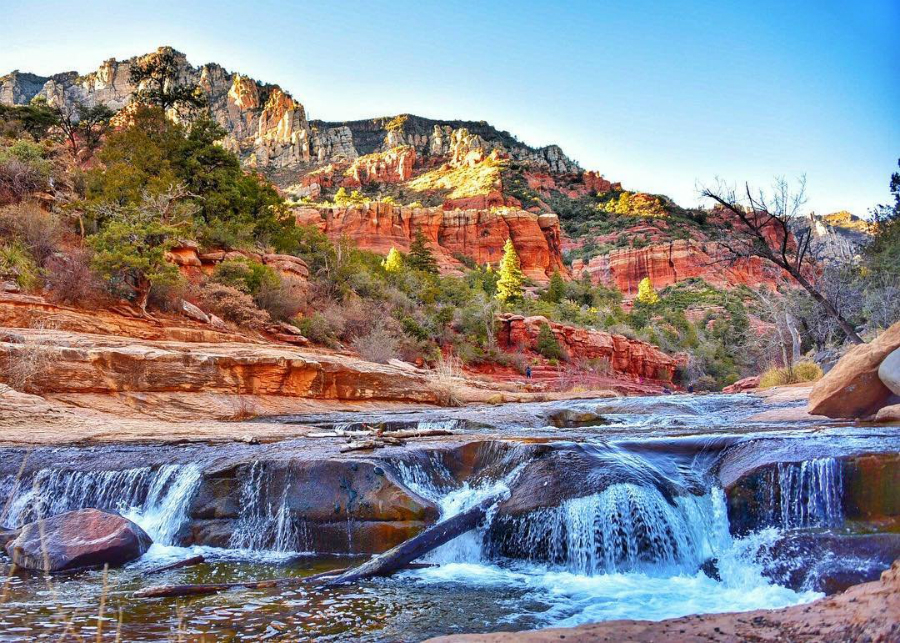
Slide Rock State Park (Photo: Sedona Chamber of Commerce and Tourism Bureau)
Tombstone
Charming, a local admitted, might not be the word that best describes Tombstone. For starters, the town’s name was inspired by warnings given to the founder, prospector Ed Schieffelin, that amidst strife with the Chiricahua Apache tribe, the only rock he’d find while out scouring the land was his own tombstone. Instead, in 1877, he found silver. The discovery would lead “the town that will never die” to become the most profitable silver mining boomtown in Arizona, until the resources ran dry. The once bustling community rapidly dwindled, but resisted turning into a dusty ghost town. Today, you can still tour Schieffelin’s silver mines, but what over 400,000 annual visitors come to experience is the spirit of the Wild West preserved by this National Historic Landmark. In the few-block Historic District, you can ride in a stagecoach or walk alongside rugged cowboys and women in ruffled fashions of the day past former saloons and theaters (both the bawdy and the highbrow) along the same dusty streets and wooden walkways as such famed figures as the Earp brothers and Doc Holliday. Watch a re-enactment of the infamous Gunfight at the O.K. Corral and see the graves of those fatally wounded at the Old Boothill Cemetery. But if it’s true charm you’re after, you can surely find it here by simply mingling with the friendly locals or catching a glimpse of the World’s Largest Rose Tree, planted by two sisters in 1885, yet another symbol of the town’s tenacity.
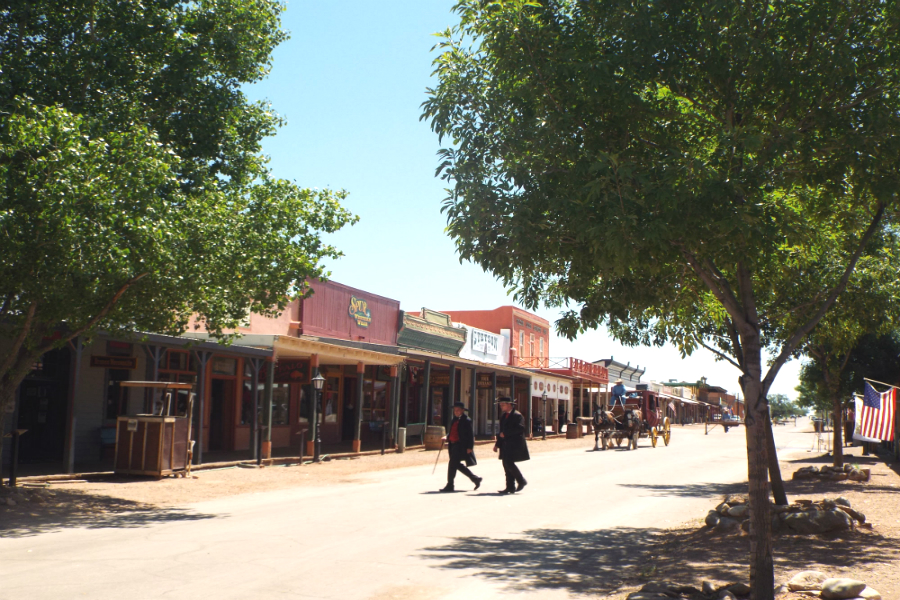
Be transported back to the Wild West in Tombstone (Photo: Keith Davis and Tombstoneweb.com)
Winslow
Winslow is a small town example of how a song lyric can be a catalyst for rebirth. The Eagle’s hit “Take It Easy” brought attention to this hidden gem with the lyrics, “Standing on the corner in Winslow, Arizona, such a fine site to see. It’s a girl, my Lord, in a flatbed Ford, slowin’ down to take a look at me.” Cashing in on this catchy tribute, the town created “Standin’ on the Corner Park,” where you can take a selfie with the bronze-statue of a man, with a guitar at his side, standing near a two-story trompe-l’œil mural of a woman in that famous ride. You don’t have to be a ‘70s rock star to feel smitten with “the city of 10,000 friendly faces.” This popular stop on Route 66 and the Santa Fe Railway has a history of making visitors feel at home, evident by their grand efforts to preserve the historic La Posada Hotel, with its Southwestern architecture and sunken gardens, attached to the train depot.
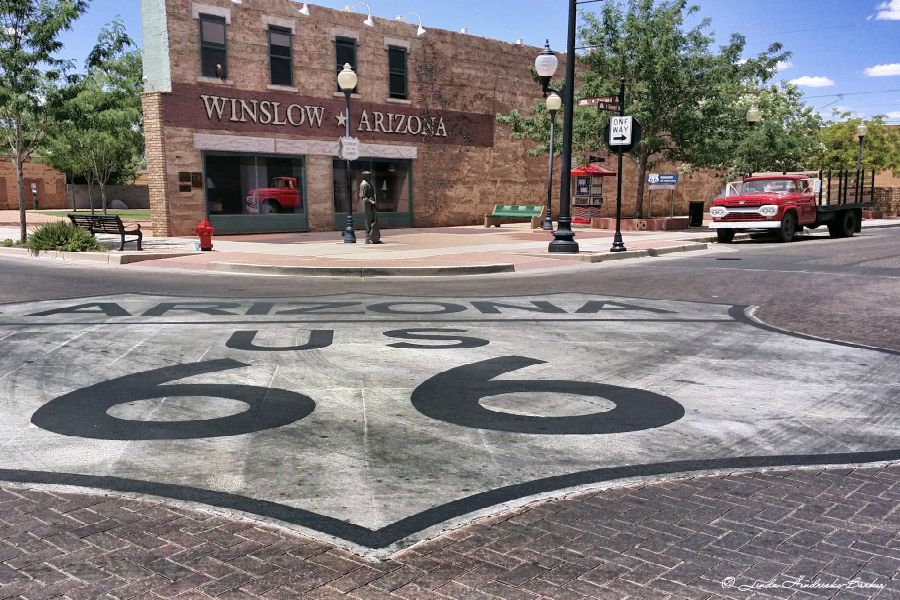
Winslow is home to the most famous corner on Route 66 (Photo: Linda Barker)
Yuma
Heading all the way down to the southwestern corner of Arizona, before reaching the Mexican border, we land in Yuma. Catch one of the city’s Heritage Festivals, like Cinco De Mayo, for a chance to celebrate this border community’s cultural diversity. Come winter, the population doubles in size, when cravings to be in what the Guinness Book of World Records has deemed “the sunniest place on earth” lure both visitors and winter-residents down south. Year-round sunshine and fertile soil makes this desert area surprisingly agricultural: Yuma produces 90-percent of the nation’s leafy greens. Medjool dates also grow here and have inspired the memorable dining experience “In a Date Grove,” named one of the most unique dining experiences in the world by Fodor’s Travel. The sweet fruit is creatively weaved throughout the elegant menu, made all the more romantic by a live string quartet. One of the greatest draws to Yuma, though, is the Colorado River. Beat the heat by flying across the wake of a speed boat, paddling a kayak or canoe, or leisurely floating downriver in a tube, drink in hand. On land, enjoy a peaceful bike ride or stroll along the riverfront and nearby Main Street, the end of the Gila Trail, where you’ll find locally-sourced dining, unique shops, and charm galore.
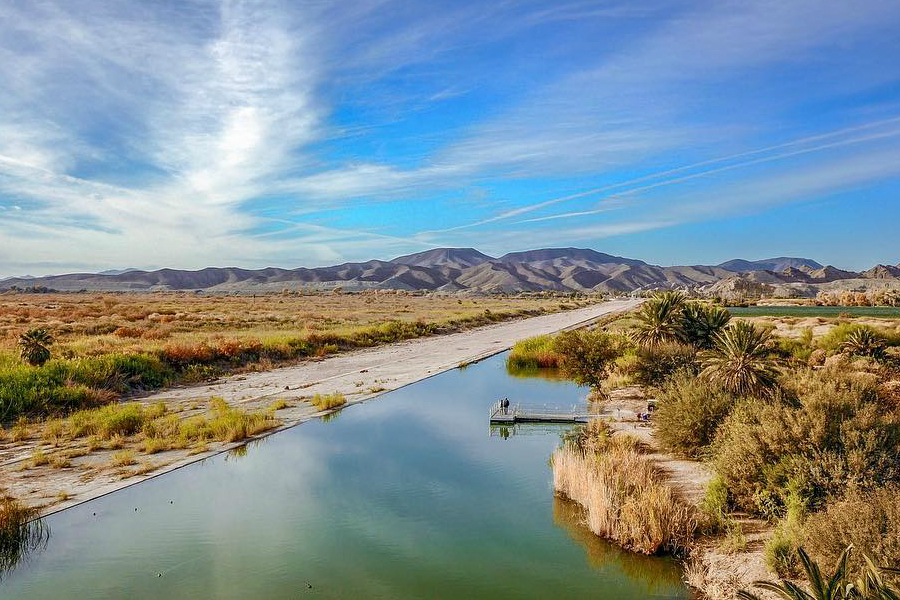
A peaceful river view in Yuma (Photo: Instagram @optical.expressionist via Visit Yuma)